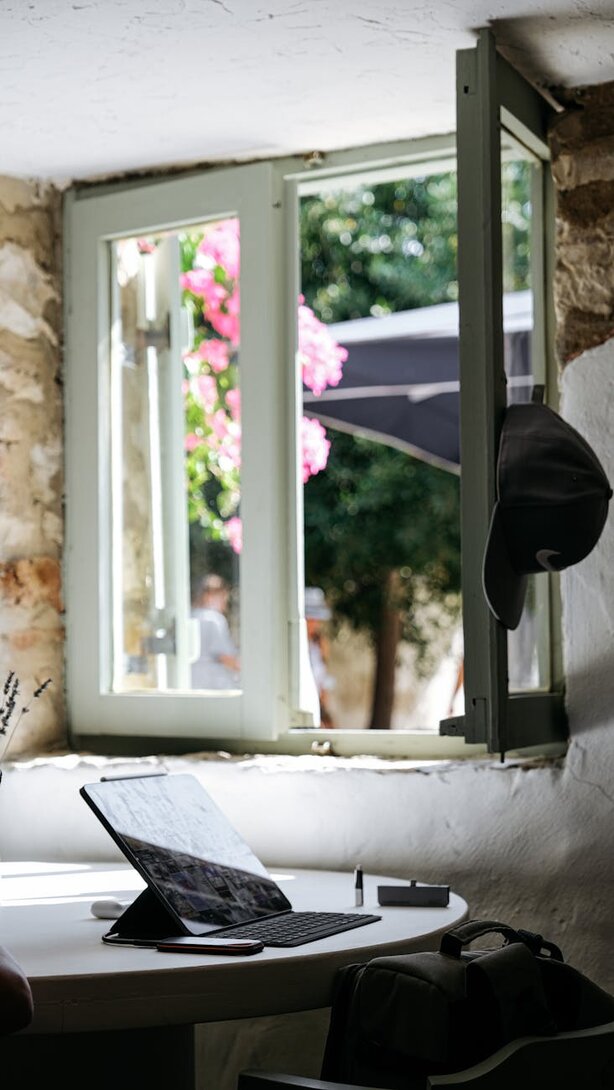Let's break this down
Scratching your head over your tax bill?
We've broken down 9 Steps To Calculate How Much Capital Gains Tax You Owe so you don't have to!
From property sales to share profits, understanding your tax bill doesn't have to give you a headache.
We've turned complex calculations into simple steps that anyone can follow.
Come on, let's master your CGT calculation together!
Here are the 9 steps to calculate how much capital gains tax you owe!

Step 1: Identify Your Chargeable Assets and Gains
Many clients are surprised by what counts as a chargeable asset. It's not just property - we've helped navigate CGT on everything from classic cars to vintage wine collections.
One client even discovered their art collection could trigger a tax liability.
Calculating capital gain seems simple: sale price minus purchase cost. But identifying allowable expenses can save thousands.
Recently, a client's renovation costs on their residential property significantly reduced their taxable gain.
For couples, strategic timing is crucial. We recently helped civil partners transfer assets before sale, effectively doubling their CGT allowance.
Smart planning can transform a hefty tax bill into a manageable one.
Step 2: Understand Capital Losses
Capital losses can be powerful opportunities.
We recently helped a client use share losses to significantly reduce their CGT liability on a later property sale.
Understanding how CGT interacts with income tax bands is crucial.
One client almost moved into the higher rate bracket from a business sale, but strategic use of carried forward losses kept their tax bill manageable.
Smart loss management makes a real difference. A property investor recently offset significant gains using historic losses, saving thousands.
Remember, losses aren't just setbacks - they are potential future savings when used strategically across tax years.


Step 3: Utilise Your Annual Exempt Amount
The CGT allowance of £3,000 is like a tax-free gift that resets each year.
We've seen clients transform their tax position by timing their asset disposals strategically.
One client saved thousands by splitting a large property sale across two tax years.
Many forget about this valuable tax-free allowance, or don't realise it can't be carried forward.
Recently, a client almost sold their entire share portfolio in one go. By spreading the sale across two years, they utilised two allowances instead of one, saving a significant amount in CGT.
Strategic use of the allowance is particularly powerful for couples.
We've helped civil partners coordinate their disposals to effectively double their tax-free amount. Remember, it's not just about selling - it's about selling smart.
We unpack more about this here by the way!
Step 4: Consider Your Income Tax Band
Understanding how CGT rates interact with income tax bands can save thousands.
We've seen many clients surprised when a substantial capital gain pushes them from the basic rate into the higher rate band.
A recent case highlighted this perfectly. A client selling their buy-to-let property hadn't considered how their rental income would affect their CGT position.
By timing the sale more strategically, they stayed within the basic rate band, saving considerable tax.
Even Scottish taxpayers, despite having different income tax rates, face the same CGT liability as the rest of the UK.
Planning around total income and understanding these interactions has helped many clients optimise their tax position effectively.


Step 5: Account for Other Income
Here's something that catches people out all the time - forgetting about their other income when planning for CGT.
Just last month, a client's work bonus pushed their property sale into a higher tax bracket. Talk about an unwelcome surprise!
Timing can be everything. We helped a landlord delay their property sale until their rental income dropped, keeping them in the basic rate band.
Sometimes, just shifting a sale by a few weeks can save thousands in tax.
It's like putting together a puzzle - every bit of income matters. Whether it's those investment profits, a surprise bonus, or good old rental income, they all add up to affect your CGT liability.
Getting the full picture has saved our clients from many a tax headache!.
Step 6: Understand Asset-Specific Rules
Different chargeable assets come with their own quirks - it's like each has its own rulebook. Property tends to catch clients out the most.
One client was delighted to discover their holiday home qualified for a special tax treatment, while another saved thousands through Private Residence Relief.
Business Asset Disposal Relief has been a game-changer for many.
We recently helped a business owner slash their tax rate to 10% on their company sale - that's a lot of money kept in their pocket rather than going to HMRC!
The trick is knowing which rules apply and when. Some clients come to us thinking all assets are taxed the same way. But whether it's cryptocurrency, classic cars, or commercial property, each has its own tax story.
Getting these rules right can mean the difference between a hefty bill and a manageable one.


Step 7: Apply Reliefs and Exemptions
CGT relief can transform a tax bill when you know what to look for.
From Private Residence Relief to personal item exemptions, there's often more relief available than clients realise. These aren't loopholes - they're legitimate ways to reduce your tax burden.
Business Asset Disposal Relief is particularly powerful, potentially halving your tax rate from 20% to 10%.
But even smaller reliefs add up. Many clients don't realise their art, antiques, or personal items might qualify for exemptions.
The trick is exploring all available reliefs before calculating your CGT liability.
What looks like a hefty tax bill often shrinks considerably when the right reliefs are applied. Remember, it's not about avoiding tax - it's about not paying more than necessary!
Step 8: Calculate Your Final CGT Bill
Calculating your final CGT bill doesn't have to be daunting. While HMRC's CGT calculator is helpful, it's the attention to detail that makes the difference.
A thorough review of all figures can transform your tax liability.
Getting it right means considering everything: your total taxable gains, allowable losses, and that all-important annual exempt amount.
The devil's in the details - we've found forgotten allowable expenses that have saved clients thousands on their rental property sales.
Meticulous record-keeping is crucial. Those small deductions add up - from estate agent fees to improvement costs.
Every legitimate expense reduces your capital gain, potentially lowering your final tax bill.


Step 9: Report and Pay Your CGT
The reporting process for capital gains tax needn't be a headache.
Well-maintained accurate records throughout the year make completing your Self Assessment tax return straightforward.
Deadlines are crucial - payment for most assets is due by 31 January following the tax year.
But beware of the residential property rule: reporting and payment within 60 days of completion. We've seen this catch many sellers.
Professional guidance often pays for itself.
Whether it's identifying overlooked reliefs or ensuring compliance with tax regulations, expert help can turn a complex process into a manageable one.
Final Thoughts
We've seen it all with Capital Gains Tax - from panicked property sale calls to last-minute relief claims. But here's the thing: with the right approach, CGT doesn't have to be scary. Smart timing and planning have saved our clients thousands.
Every asset tells its own story. From residential property deadlines to business sales, there's usually more relief available than clients expect. We love showing how capital losses can offset future gains or how strategic use of the CGT allowance can transform a tax bill.
The magic happens when you see the bigger picture. Understanding how your total income affects your CGT liability, keeping pristine records, and staying ahead of deadlines - it all adds up. While the rules keep changing, that's what we're here for. Getting tax right doesn't have to be taxing!




